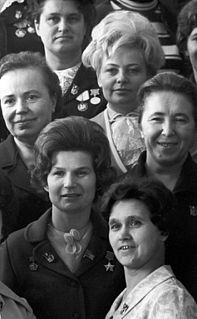 W
WThe 24th Congress of the Communist Party of the Soviet Union (CPSU) was convened in Moscow from 30 March to 9 April 1971. The Congress brought together 4,963 delegates, with 102 foreign delegations from 91 countries as observers.
 W
WThe 1971 January 22 Surgut Aeroflot Antonov An-12 crash occurred on 22 January 1971, when an Aeroflot Antonov An-12B, registered CCCP-11000, flying from Omsk Tsentralny Airport, in the Soviet Union's (RSFSR), crashed 15 km (9.3 mi) short of the runway on approach to Surgut International Airport, Surgut, RSFSR. An investigation found the aircraft's ice protection system was ineffective because the engine bleed air valves were closed during the flight; ice therefore built up on the aircraft causing it to go out of control.
 W
WThe 1971 January 31 Surgut Aeroflot Antonov An-12 crash occurred on 31 January 1971, when an Aeroflot Antonov An-12B, aircraft registration CCCP-12996, flying from Roshchino International Airport, Tyumen, in the Soviet Union's Russian Soviet Federated Socialist Republic (RSFSR), crashed 13.6 km (8.5 mi) short of the runway on approach to Surgut International Airport, Surgut, RSFSR. An investigation found the aircraft's loss of control was caused by icing.
 W
WThe Soviet Union's 1971 nuclear test series was a group of 23 nuclear tests conducted in 1971. These tests followed the 1970 Soviet nuclear tests series and preceded the 1972 Soviet nuclear tests series.
 W
WAeroflot Flight 773 was a scheduled domestic Soviet Union passenger flight from Moscow to Simferopol that crashed following a bomb explosion on 10 October 1971.
 W
WAeroflot Flight 1912 was a scheduled domestic Aeroflot passenger flight on the Odessa-Kyiv-Chelyabinsk-Novosibirsk-Irkutsk-Khabarovsk-Vladivostok route that crashed on 25 July 1971, making a hard landing at Irkutsk Airport. It touched down 150 m (490 ft) short of the runway, breaking the left wing and catching fire. Of the 126 people on board the aircraft, 29 survived.
 W
WAeroflot Flight 1969 was a passenger flight operated by an Antonov An-10 that crashed during the approach to Luhansk on 31 March 1971, resulting in the death of all 65 people on board. An investigation revealed that the Antonov's right wing failed structurally during approach to Luhansk International Airport.
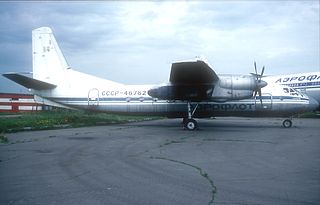 W
WAeroflot Flight 2174 was a scheduled domestic passenger flight operated by an Antonov An-24B that crashed on approach to Saratov Tsentralny Airport on Wednesday 1 December 1971, resulting in the death of all 57 people on board. An investigation revealed the aircraft entered icing conditions leading to a loss of control.
 W
WAeroflot Flight N-63 was a scheduled Antonov An-24 flight from Kiev-Zhulhyany Airport to Vinnitsa Airport. The flight proceeded routinely through takeoff and cruise, but started to enter trouble when on final approach due to the bad weather; this included freezing rain with fog and low clouds. The first landing attempt was aborted. The pilots attempted a second approach, but couldn't land and initiated a go-around. During the go-around, the aircraft went nose-high and stalled before crashing 850 m (2,790 ft) short of the threshold. All 48 passengers and crew onboard were killed. The aircraft had been operating for 10,658 flight cycles and had a total of 11,329 flight hours.
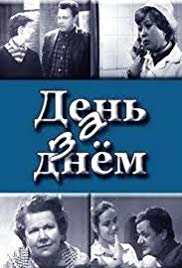 W
WDay by Day is a Soviet TV series directed by Vsevolod Shilovsky, based on a screenplay by Mikhail Ancharov. Considered the first Soviet television series filmed by the USSR Central Television.
 W
WThe Four Power Agreement on Berlin, also known as the Berlin Agreement or the Quadripartite Agreement on Berlin, was agreed on 3 September 1971 by the four wartime Allied powers, represented by their ambassadors. The four foreign ministers, Alec Douglas-Home of the United Kingdom, Andrei Gromyko of the Soviet Union, Maurice Schumann of France, and William P. Rogers of the United States signed the agreement and put it into force at a ceremony in Berlin on 3 June 1972. The agreement was not a treaty and required no formal ratification.
 W
WGentlemen of Fortune is a 1971 Soviet crime comedy film, filmed at Mosfilm and directed by Aleksandr Sery. The stars of the film include famous Soviet actors such as Yevgeny Leonov, Georgy Vitsin, Savely Kramarov and Radner Muratov.
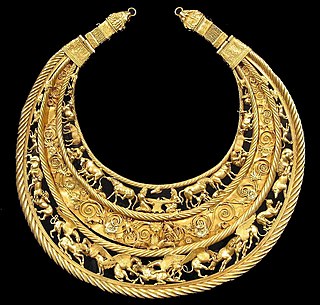 W
WThe Golden Pectoral from Tovsta Mohyla is an ancient Scythian treasure discovered in a burial kurgan at a site called Tovsta Mohyla in 1971 by the Ukrainian archaeologist Boris Mozolevski. The Tovsta Mohyla burial mound, meaning fat barrow, is located in present day southern Ukraine near the city of Pokrov in Dnipro region.
 W
WThe Indo–Soviet Treaty of Peace, Friendship and Cooperation was a treaty signed between India and the Soviet Union in August 1971 that specified mutual strategic cooperation. This was a significant deviation from India's previous position of non-alignment during the Cold War and was a factor in the 1971 Indo-Pakistani war.
 W
WKosmos 398 was the second unmanned test flight of the Soviet LK lander, using the T2K version. It followed the same program as Kosmos 379, launching on February 26, 1971 into a 276 km by 196 km orbit. It main objective was to validate contingency abort-to-lunar orbit manoeuvres.
 W
WKosmos 434 was the final uncrewed test flight of the Soviet LK Lander. It performed the longest burn of the four uncrewed LK Lander tests, validating the backup rocket engine of the LK's Blok E propulsion system. It finished in a 186 km by 11,804 km orbit. This test qualified the lander as flightworthy.
 W
WAt about 11:45 A.M. on September 16, 1971, Malév Flight 110 crashed near Kiev-Borispol Airport, Ukraine.
 W
WThe Mars 2 was an uncrewed space probe of the Mars program, a series of uncrewed Mars landers and orbiters launched by the Soviet Union beginning 19 May 1971. The Mars 2 and Mars 3 missions consisted of identical spacecraft, each with an orbiter and an attached lander. The orbiter is identical to the Venera 9 bus. The type of bus/orbiter is the 4MV. They were launched by a Proton-K heavy launch vehicle with a Blok D upper stage. The lander of Mars 2 became the first human-made object to reach the surface of Mars, although the landing system failed and the lander was lost.
 W
WMars 3 was a robotic space probe of the Soviet Mars program, launched May 28, 1971, nine days after its twin spacecraft Mars 2. The probes were identical robotic spacecraft launched by Proton-K rockets with a Blok D upper stage, each consisting of an orbiter and an attached lander. After the Mars 2 lander crashed on the Martian surface, the Mars 3 lander became the first spacecraft to attain a soft landing on Mars, on December 2, 1971. It failed 110 seconds after landing, having transmitted only a gray image with no details. The Mars 2 orbiter and Mars 3 orbiter continued to circle Mars and transmit images back to Earth for another eight months.
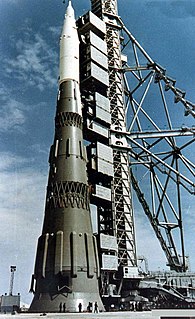 W
WThe N1/L3 was a super heavy-lift launch vehicle intended to deliver payloads beyond low Earth orbit. The N1 was the Soviet counterpart to the US Saturn V and was intended to enable crewed travel to Earth's Moon and beyond, with studies beginning as early as 1959. Its first stage remains one of the most powerful rocket stages ever built, However, all of the four flown N1 Block A first stages failed because a lack of static test firings meant that plumbing issues and other adverse characteristics with the large cluster of thirty engines and its complex fuel and oxidizer feeder system were not revealed earlier.
 W
WOperation Ivy Bells was a joint United States Navy, Central Intelligence Agency (CIA), and National Security Agency (NSA) mission whose objective was to place wire taps on Soviet underwater communication lines during the Cold War.
 W
W"Our Contemporary" Exhibition of Leningrad artists of 1971 became one of the notable event in Art live of Leningrad of the beginning of 1970s. The Exhibition took place in the State Russian Museum. Exhibition opened a series of Leningrad, Zonal and National art exhibitions of the 1970s, dedicated to image of our contemporary.
 W
WSalyut 1 (DOS-1) was the world's first space station launched into low Earth orbit by the Soviet Union on April 19, 1971. The Salyut program followed this with five more successful launches of seven more stations. The final module of the program, Zvezda (DOS-8), became the core of the Russian segment of the International Space Station and remains in orbit.
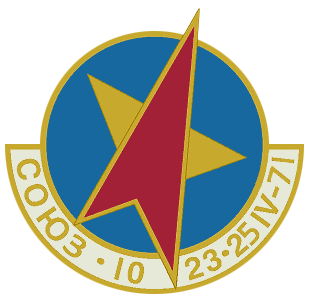 W
WSoyuz 10 was launched on 22 April 1971 as the world's first mission to the world's first space station, the Soviet Salyut 1. The docking was not successful and the crew, Vladimir Shatalov, Aleksei Yeliseyev, and Nikolai Rukavishnikov, returned to Earth without having entered the station. It would be the first of numerous docking failures in the Soviet space station program.
 W
WSoyuz 11 was the only crewed mission to board the world's first space station, Salyut 1. The crew, Georgy Dobrovolsky, Vladislav Volkov, and Viktor Patsayev, arrived at the space station on 7 June 1971, and departed on 29 June 1971. The mission ended in disaster when the crew capsule depressurised during preparations for re-entry, killing the three-man crew. The three crew members of Soyuz 11 are the only humans to have died in space.